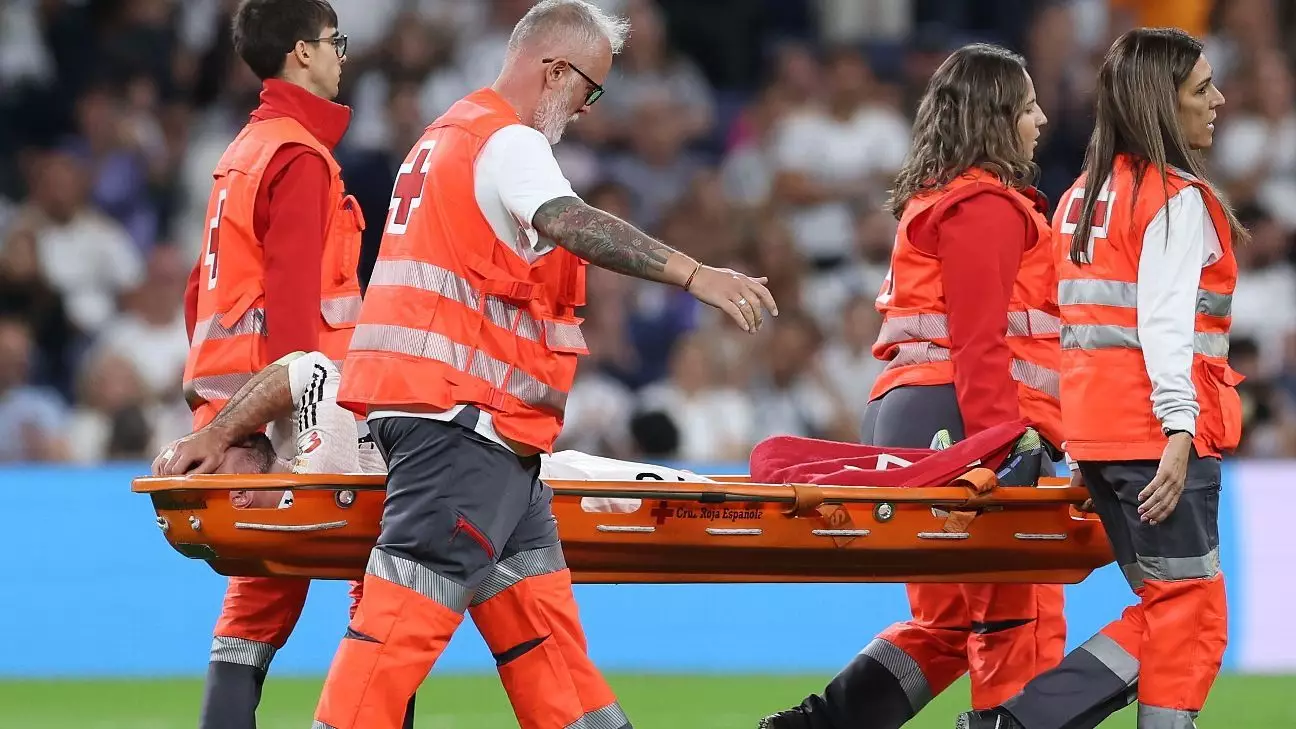The recent injury to Dani Carvajal has thrown Real Madrid into a difficult position as they seek to bolster their defensive line. With the club’s priority now firmly set on finding a suitable replacement, the task at hand is complicated by a myriad of factors, including existing contracts and market dynamics.
During a recent LaLiga match against Villarreal, Carvajal sustained a severe leg injury that has since been classified as a ruptured anterior cruciate ligament, external collateral ligament, and popliteus tendon. The severity of the injury necessitates surgery, marking a significant long-term absence for the Spain international. This unfortunate turn of events has left Real Madrid relying on Lucas Vázquez, a player converted from a winger to operate at right-back. While Vázquez brings experience to the role, there are credible concerns among management regarding his capability to serve as the primary option defensively, particularly over an extended period.
In the aftermath of Carvajal’s injury, it has been reported that Real Madrid are actively scanning the transfer market for potential right-back replacements. Sources suggest that over ten players have been proffered to the club, yet the complexity of securing a top-tier candidate remains a daunting obstacle. Given that many attractive options are currently under contract with their respective clubs, Madrid faces the dual challenge of managing financial considerations while navigating through competitive negotiations.
One name prominently in discussions is Trent Alexander-Arnold of Liverpool. The England full-back has a contract expiring next summer, making him a potentially viable target for Madrid. Initially perceived as more of a long-term prospect, his talents have now earned him a place on the club’s immediate wish list due to Carvajal’s predicament. However, the uncertainty surrounding Alexander-Arnold’s future at Liverpool complicates matters further. Securing a deal that would allow him to transition to LaLiga mid-season may prove to be a convoluted process, highlighting the delicate nature of the current transfer landscape.
Alternative Options and Strategic Focus
As Real Madrid continues to seek immediate solutions, they are also taking stock of the club’s existing defensive lineup. With the departure of notable players like Nacho and missing out on centre-back Leny Yoro last summer, options appear limited. The backline now prominently features Àder Militão and Antonio Rüdiger as the primary central defensive pairing, while David Alaba’s ongoing recovery grants limited visibility into the team’s defensive options. Notably, the club is also monitoring the future of Alphonso Davies from Bayern Munich, targeted for a potential summer 2025 acquisition. However, to expedite this transfer, a mutually agreeable negotiation with Bayern must take place, and such dealings are often less than straightforward given the ambitions of the German giants.
Coach Carlo Ancelotti has voiced his desire for the club to quickly address these defensive issues. The mounting pressure to fortify the squad only intensifies with the need for experienced players capable of withstanding the rigors of first-team action. Given Vázquez’s past performances and the uncertainties surrounding García’s readiness, the coaching staff have reason to be apprehensive about line-up stability going forward.
In addition to immediate signings, Real Madrid has recognized the necessity of seeking younger players with significant long-term potential. Sources assert that the scouting team is committed to finding up-and-coming talent in the market, provided they exhibit the requisite qualities to contribute meaningfully to the current squad. Should Madrid’s recruitment processes not yield favorable results, they may need to revert to relying on their existing lineup, similar to how they navigated the summer transfer period following Yoro’s signing eluding them.
Real Madrid is entrenched in a multifaceted situation, necessitating strategic foresight and agile decision-making in the face of adversity. With Carvajal’s injury casting a shadow over the defensive setup, the club’s actions in the upcoming months will be critical in determining the stability and performance of the backline moving forward. As the January window approaches, all eyes will be on Madrid’s ability to adapt and reinforce their squad effectively while maintaining their competitive edge in both domestic and European competitions.

